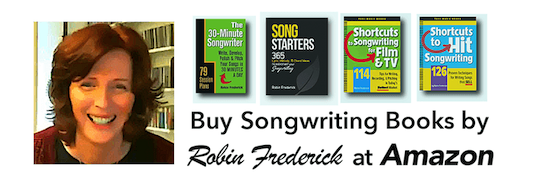If you could ask Imagine Dragons a question, what would you want to know? You’d probably ask how they do write their hit songs. In fact, you can ask that question and get an answer… just by taking an in-depth look into their biggest hits.
“Believer” – Imagine Dragons
Songwriters: Daniel Wayne Sermon, Daniel Coulter Reynolds, Benjamin Arthur McKee, Daniel James Platzman, Robin Lennart Fredriksson, Mattias Per Larsson, Justin Drew Tranter
TECHNIQUES TO HEAR AND TRY:
- Find a fresh approach to your theme/core idea.
- Get listeners involved in your lyric with imagery.
- Use repetition to make your melody undeniable.
- Try a crossover genre like Pop/Rock

Imagine Dragons is one of the most successful Alt Rock, Pop/Rock bands of recent times. They’ve topped the music charts with hit after hit, blowing way past the billion mark in sales and streams. They have consistently created bold, memorable melodies and emotionally authentic lyrics with themes that engage the listener’s emotions.
“Believer” was the band’s third top ten single and a worldwide hit with five times platinum sales. Its powerful lyric theme and emotion-driven chorus have been successfully featured in commercials, film trailers, and TV series.
Listen to the song. Read the lyrics.
GENRE/STYLE: Pop/Rock, Alt Rock
(What is a genre? Watch this video.)
At 126 beats per minute (BPM) this song raises the listener’s energy level without becoming frenetic. It has a body-grooving feel created by a deliberate, steady beat that gives the highly syncopated melody plenty of support and creates a danceable quality that fits right into today’s Pop radio. At the same time, the vocal has a Rock edge and the punch of words like “pain” and “believer” gives it a Rock anthem feel. Together these elements give it crossover appeal.
Imagine Dragons is a respected Rock/Alt Rock band that has managed to cross over to Pop chart success. They’re a rare example of a group that has been able to maintain Rock and Indie cred while writing melodic, catchy hooks that reach a wide range of fans.
SONG STRUCTURE
The song structure is…
VERSE 1/VERSE 2/PRE-CHORUS/CHORUS
VERSE 3/PRE-CHORUS/CHORUS
VERSE 4/HALF PRE-CHORUS/CHORUS
VERSES: The song opens with two short verses, each one four lines long. Right away, the lyric begins to lay out the structure of the song:
VERSE 1: “First things first…”
VERSE 2: “Second things second…”
VERSE 3: “Third things third…”
VERSE 4: “Last things last…”
PRE-CHORUS: At eight lines, the pre-chorus section is unusually long. The first pre-chorus begins “I was broken from a young age” and ends with a strong transition line: ” Seeing the beauty through the… pain.” The second pre-chorus begins with “I was choking in the crowd…” and ends with “And rained down like…pain.”
TIP: Notice that the last word of the pre-chorus— “pain” —is also the first word of the chorus! It’s unexpected and grabs attention at an important point in the song. You could try something like this to liven up a transition in a song of your own. Start the chorus earlier than expected, maybe halfway through the final line of a pre-chorus.
CHORUS: There’s a big leap upward from the last note of the pre-chorus to the first note of the chorus (“pain”). At almost an octave it’s sure to get noticed. The chorus melody uses that big leap again on the second line and the payoff line.
BRIDGE: Notice that the first and second pre-choruses have the same long length, while the third pre-chorus consists of only the last four lines. This half pre-chorus takes the place of a bridge, using the most energetic lines to build intensity as the song moves into the final chorus. This is a creative way to make a pre-chorus work harder.
CONTRAST BETWEEN SECTIONS: As you listen to the “Believer” by Imagine Dragons, notice how the melody of the pre-chorus emphasizes a single note and uses only three different notes in the entire section. Both the verse and chorus have much wider note ranges and more movement between notes, with the chorus having the biggest note range of all.
Each section has its own distinctive melody, clearly letting the listener know when the song moves from one section to the next. It creates a solid sense of structure that helps listeners know where they are.
LYRICS
ADAPT YOUR THEME: Wrestling with the emotional pain of growing up, heartbreak, or a tough life challenge is a core idea that listeners can identify with. So of course it’s been used in a lot of songs. If you want listeners to hear it and feel the full impact then you need to approach it from a fresh angle.
In this lyric, instead of simply saying: “I really hurt; (life) (love) (growing up) is painful,” the singer addresses his pain as “you,” treating it like a combatant, an enemy who has made the singer stronger. By talking directly to his pain, he makes it more present, more real for us as listeners, and therefore a more compelling experience.
KEEP YOUR LISTENER WITH YOU: This lyric does a great job of ensuring that the listener understands the message the songwriters want to get across. Just before the final payoff line of the chorus, the lyric comes right out and says it: “My life, my love, my drive, it came from pain.”
If you have any doubt about whether you’ve communicated your core idea to the listener, make at least one lyric line a clear, direct statement of your theme. Choose a line that listeners are likely to hear. Put it in the chorus if you can, or the line leading up to the chorus.
Learn more about how to keep your listeners engaged in your song.
USE IMAGERY: In all types of creative writing, imagery refers to words and phrases that help the listener imagine the world you’re describing. Imagery includes not just visual images but also actions and physical sensations. Imagine Dragons use several forms of imagery in this song.
1) They paint a visual picture of the singer as the master of a ship at sea and include visual objects like “veins,” “brain,” and “bullets.”
2) They employ action words like “sulking,” “shook,” “send a prayer,” “falling,” “ebbing and flowing.”
3) They involve the listener’s physical senses with words like “choking” “fire and flames,” “drown,” and “rain.”
Listeners are not merely a passive set of ears “receiving” your song. If you don’t get them actively involved by giving them something that engages their imagination, they’ll tune out. Imagery is a great way to do it!
– Try It Now –
Read through one of your own song lyrics to see if you can add imagery that engages your listeners mentally, physically, and emotionally.
MELODY
Today’s big hit melodies often feature complicated rhythms which can be difficult for listeners to remember. To mitigate this problem, these melodies use plenty of line and phrase repetition in clearly laid out patterns. Let’s take a look at the melody of “Believer” to see how repetition is used.
VERSE MELODY: In the verses, the first line establishes the melody. Then it’s repeated while the lyrics change.
LINE 1: “First things first I’ma say all the words inside my”
LINE 2: “…head. I’m fired up and tired of the way that things have been”
LINE 3: Starts with a new melody phrase (“Oh Ooo”), then repeats the second half of Line 2 (“the way that things have been”) and ends by repeating the “Oh Ooo” melody.
That’s a lot of repetition and it’s clearly organized making this verse melody easy to remember .
PRE-CHORUS MELODY: In the pre-chorus, the melody patterns are a little more complicated. Now the singer is repeating phrases within each line. For example, in Line 1 there are two phrases. The second phrase repeats the melody pitches and rhythm of the first.
PHRASE 1: I was broken
PHRASE 2: from a young age
You’ll hear the same thing happening in Line 2 of the pre-chorus. It happens again in Line 3, but the melody pitches have moved higher. Finally, Line 4 breaks the cycle of repetition and we get something new. Then the whole pattern repeats.
CHORUS MELODY: There’s even more phrase repetition here!
PHRASE 1 is a single high note: “Pain.”
PHRASE 2 is a repeated melody phrase: “You made me a, you made me a…”
PHRASE 3 consists of two new phrases with the second phrase repeating the melody rhythm of the first on different note pitches: “believer / believer.”
Then all three phrases are repeated with a change of lyric.
-Try It Now –
Listen to the rest of the chorus and look for patterns of repetition in the melody lines and phrases.
CHORDS to “Believer” by Imagine Dragons
This is a three-chord song with a chord progression that simply repeats over and over. It’s a great example of how melody can keep even an ultra-simple chord progression interesting. The syncopated rhythms of the melody, contrast between sections, and interval leaps in the chorus melody all combine to keep the listener involved.
Here are the chords: | Am | Am | F | E |
(To play along on guitar, capo on the first fret, on keyboard transpose +1.)
– Try It Now –
Learn to play this three-chord song and sing along with the melody and lyrics to one verse, pre-chorus, and chorus. If you don’t play an instrument, just sing along and clap or tap your foot in time to the beat. Get a feel for this syncopated melody style. It works well for Pop, Rock, Singer-Songwriter, and even Country songs.
READ MORE HIT SONG GUIDES ON THIS SITE and learn from the hits!

